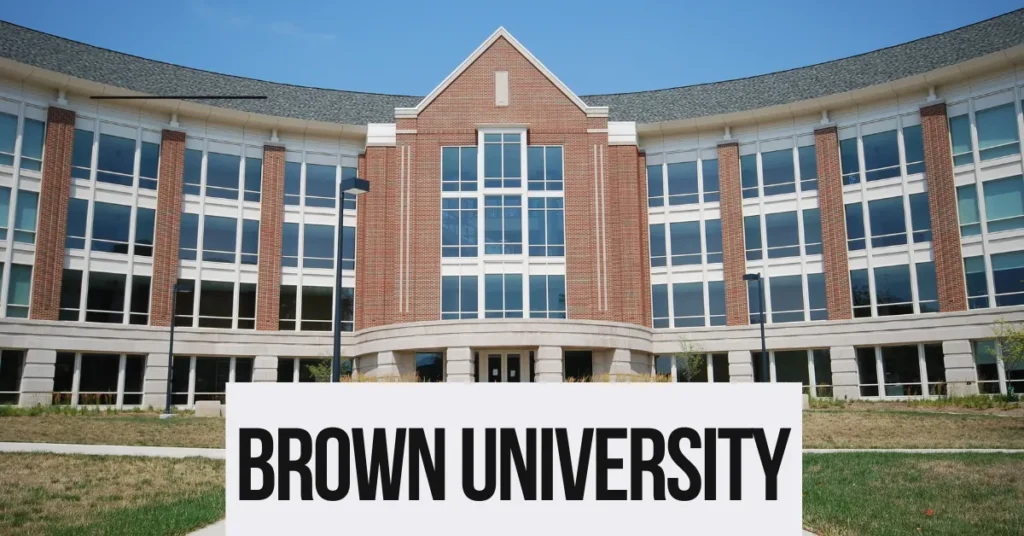Brown University, located in Providence, Rhode Island, is one of the Ivy League’s prestigious private research universities.
Known for its distinctive curriculum, strong emphasis on undergraduate teaching, and vibrant campus life, Brown has a rich history and continues to make significant contributions across various fields.
This blog post delves into the history of Brown University, its current status as a leading institution of higher learning, and frequently asked questions about this esteemed university.
History of Brown University
Founding and Early Years
Brown University was founded in 1764 as the College in the English Colony of Rhode Island and Providence Plantations.
It was the seventh institution of higher education established in the American colonies and the first to accept students regardless of their religious affiliation.
The college was initially located in Warren, Rhode Island, before moving to its current location on College Hill in Providence in 1770.

19th Century Growth and Development
During the 19th century, Brown expanded its academic offerings and infrastructure.
The introduction of graduate programs and the establishment of the Brown University Charter in 1804 marked significant milestones.
The university’s commitment to diversity and inclusion was evident from its early years, admitting its first African American student, Inman Page, in 1877, and its first female students through the Women’s College in Brown University (later Pembroke College) in 1891.
20th Century Transformation
The 20th century saw Brown University transform into a leading research institution.
The adoption of the Open Curriculum in 1969, which allows students to design their educational paths without mandatory core requirements, set Brown apart from its peers. This innovative approach emphasized student autonomy and interdisciplinary learning.
Modern Era
Today, Brown University is composed of the College (undergraduate), the Graduate School, and the Warren Alpert Medical School, along with numerous research centers and institutes. Brown offers a wide range of undergraduate, graduate, and doctoral programs across various fields, fostering an environment of academic excellence and intellectual freedom.
Present Scenario
Academic Excellence
Brown University consistently ranks among the top universities globally. It is renowned for its rigorous academic programs, distinguished faculty, and strong emphasis on undergraduate education.
Brown’s Open Curriculum encourages students to explore their interests and passions without the constraints of a traditional core curriculum, fostering creativity and critical thinking.
Research and Innovation
Research at Brown spans a wide array of disciplines, from biomedical engineering and neuroscience to public policy and the humanities.
The university is home to numerous research centers and institutes, including the Watson Institute for International and Public Affairs, the Carney Institute for Brain Science, and the Brown Institute for Translational Science.
Brown’s research output is substantial, with numerous patents, publications, and innovations emerging each year.
Campus and Facilities
Brown’s campus in Providence, Rhode Island, blends historic and modern architecture, featuring state-of-the-art laboratories, libraries, and recreational facilities.
Notable landmarks include the Van Wickle Gates, the John Hay Library, and the Stephen Robert ’62 Campus Center.
The campus also boasts extensive athletic facilities, supporting a strong tradition of varsity and club sports.
Entrepreneurship and Industry Collaboration
Brown has a vibrant entrepreneurial ecosystem, supported by initiatives such as the Nelson Center for Entrepreneurship and the Brown Venture Launch Fund.
These programs provide resources, mentorship, and funding opportunities for students and faculty interested in launching startups. Brown’s connections with industry and its strategic location in the Northeast also facilitate numerous collaborative projects and internships.
Global Impact
Brown University’s influence extends beyond the United States, with numerous international collaborations and partnerships.
The university’s alumni network includes leaders in various fields, from government and business to academia and the arts, contributing to its global impact.
Recommended Reading
- Finance & Insurance HUB
- The Best Health Insurance in the USA: A Complete Guide
- Comprehensive Insurance for 4-Wheelers: A Complete Guide
- How to Purchase Insurance: A Comprehensive Guide
- How to Purchase Health Insurance and Where to Buy It
- Understanding the Health Insurance Marketplace: A Comprehensive Guide
- Loan Against Property: A Comprehensive Guide
Frequently Asked Questions (FAQs)
What is Brown known for?
How hard is it to get into Brown?
What is the student-to-faculty ratio at Brown?
What are the key research areas at Brown?
Does Brown offer financial aid?
What is the campus life like at Brown?
How does Brown support entrepreneurship?
What are some notable alumni of Brown?
Conclusion
Brown University stands as a beacon of academic excellence, research innovation, and vibrant campus life.
From its founding in the mid-18th century to its current status as a global leader in higher education, Brown has continually pushed the boundaries of knowledge and innovation.
With a commitment to fostering intellectual growth, social impact, and global engagement, Brown University remains at the forefront of higher education.
Whether you’re a prospective student, a researcher, or an admirer of groundbreaking achievements, Brown’s story is one of inspiration and aspiration.